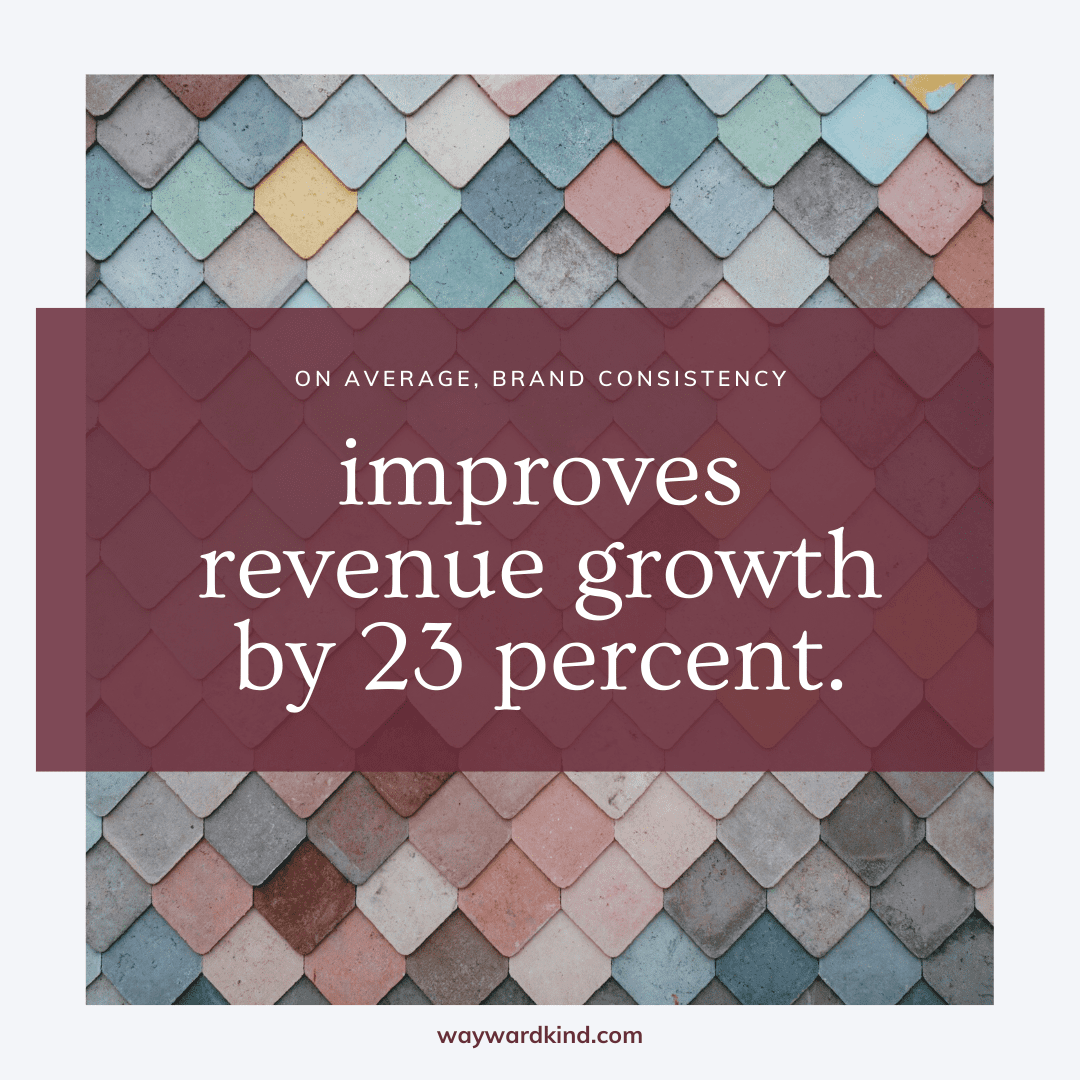In the same way that people speak in their own way, so do brands.
And brands desperately need a unique voice. Why is that? Mostly because in order for a brand to be memorable enough to stand out from its competitors, and recognizable in the sea of other businesses, that brand needs to resonate with its audience.
The Importance of Brand Voice for Small Businesses
When it comes to communicating with clients and promoting your services, it may seem like the last thing you have time for is a brand voice. But developing a brand voice can aid business growth by making sure all the content you share is consistent with your brand and easily recognizable by your audience.
Statistic source
Developing a consistent brand voice helps businesses and organizations build connections with their audience and improve reach across channels, from social media to email newsletters to messaging on the website.
How to Create Brand Voice Guidelines
In order to create your brand voice, the two most important areas to focus on are your values and your audience.
Focus on Your Values
By crafting your voice to be consistent with your values, you’re ensuring that your messaging remains consistent and has purpose. So before you decide how to message your brand, you should focus on why you’re communicating in the first place.
Enter core values. Identifying these values is important to the way your brand is shaped because they create a consistent reference point that helps to communicate messages effectively.
A Quick Brand Voice Quiz
A great starting point to defining your core values is to ask yourself questions like:
- “What does my business believe in?”
- “Why did I start my business?”
- “What frustrates me about my industry?”
- “What kind of impact do I want to have on my industry?”
Understand Your Audience
In order to create messaging that’s relevant to your audience, you need to research their personas properly. A persona is a fictional character that represents a segment of your target audience; personas are created from data and market research as a way to create better content.
Hopefully, if you’re already outlining your brand messaging, your audience research has been completed. If not, check out this post we wrote on why psychographics are the new demographics, and how they help businesses get inside the heads of their target audience.
Understanding your audience will help inform the way you communicate with them. What do they respond best to? What’s most important to them?
The Top Three Elements of a Brand Voice
When it comes to brand voice, there are a few things at play. While you don’t have to be a copywriter to define your business’ voice, you should keep the following in mind:
Character
Your brand voice’s character is how the appearance and personality of your brand come together. This character is usually conceptual, or personified as an individual or a spokesperson.
For example, businesses that focus on financial services tend to select a character that is a representation of themselves because it makes the most sense for their audience to interact directly with the advisor’s public persona.
Tone
Think of the tone of your brand voice as the tone of one of your friends in different situations. For example, your friend will speak differently in a movie theatre or at brunch than they would speak at work.
Your brand should do the same, mainly because different parts of your audience follow you on each platform. Your audience on LinkedIn will be more likely to engage with different content than your audience on Instagram.
Language
Language helps to describe your purpose and illustrate the character that makes up your brand voice’s tone.
- How formal is your tone? For example, financial advisors and law firms will lean toward more formal language, which can be expressed with longer and more complex sentences, including more industry terms and buzzwords, and using higher-level vocabulary.
- Are you humorous? If so, is it subtle or eccentric? Smart? Work that in!
- What about straightforward? Do you use metaphors or appeal to emotions?
Combining it All
Hopefully, you’ve got a better understanding of the main areas to consider when starting to build out your brand voice. We could go on and on about the nuances of messaging, audience, and strategy, but we’re strong believers in turning information into action. If you’re curious about what your messaging could look like, give us a shout!

We can help you master your digital marketing strategy with CRO tips. Our team of strategists are experts at understanding you and your audience. Whether it’s setting up Google Analytics, or creating great landing pages, Wayward Kind is all about action. Ready to convert to a mindful marketing strategy? Contact us today!






